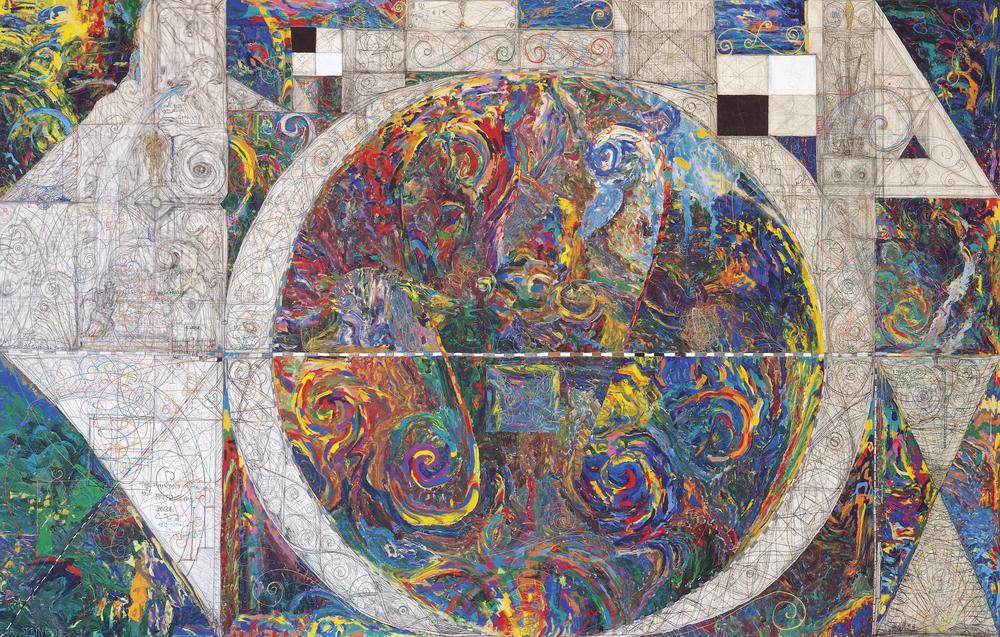William T. Wiley. Environmental Concerns
Born in 1937 in Bedford, Indiana, William T. Wiley moved with his family around 1947 to Richland, Washington. His father was a labor foreman at the nearby Hanford Site, which was built as part of the 1943 Manhattan Project to house the world’s first plutonium reactor. As the artist recalled, “Richland is one of the most polluted places on the planet,” but at that time the atomic bomb was the town’s source of pride.1 The local school team was called the Bombers, its emblem a mushroom cloud. Richland had an ominous presence in the artist’s youth that has permeated his work throughout his career. By the 1980s, environmental degradation had become a dominant theme. In Wiley’s painting Gineric D.B.L. (Part A) (1989), colorful abstract markings make up a central sphere—a chaotic pattern of churning ocean and atmospheric whorls that Wiley says represents the earth.2 Around the earth are the artist’s distinctive symbols like the ampersand and hourglass, graphite scrawl, and cryptic texts like “Say so long to the elephants.” Despite its turmoil, geometric lines divide the space of the canvas, containing erratic scribble within a system reminiscent of scientific or musical notation.
William T. Wiley, interview with Heather Green at Wiley’s studio in Woodacre, California, for a SJMA podcast on the occasion of De-Natured: Works from the Anderson Collection, recorded 2007, video, 5:40 minutes, available at youtube.com/watch?v=TezROqgqtaQ. ↩︎
Ann M. Wolfe, untitled essay in Selections: San José Museum of Art Permanent Collection, ed. Susan Landauer (San José, CA: San José Museum of Art, 2004), 242. ↩︎
